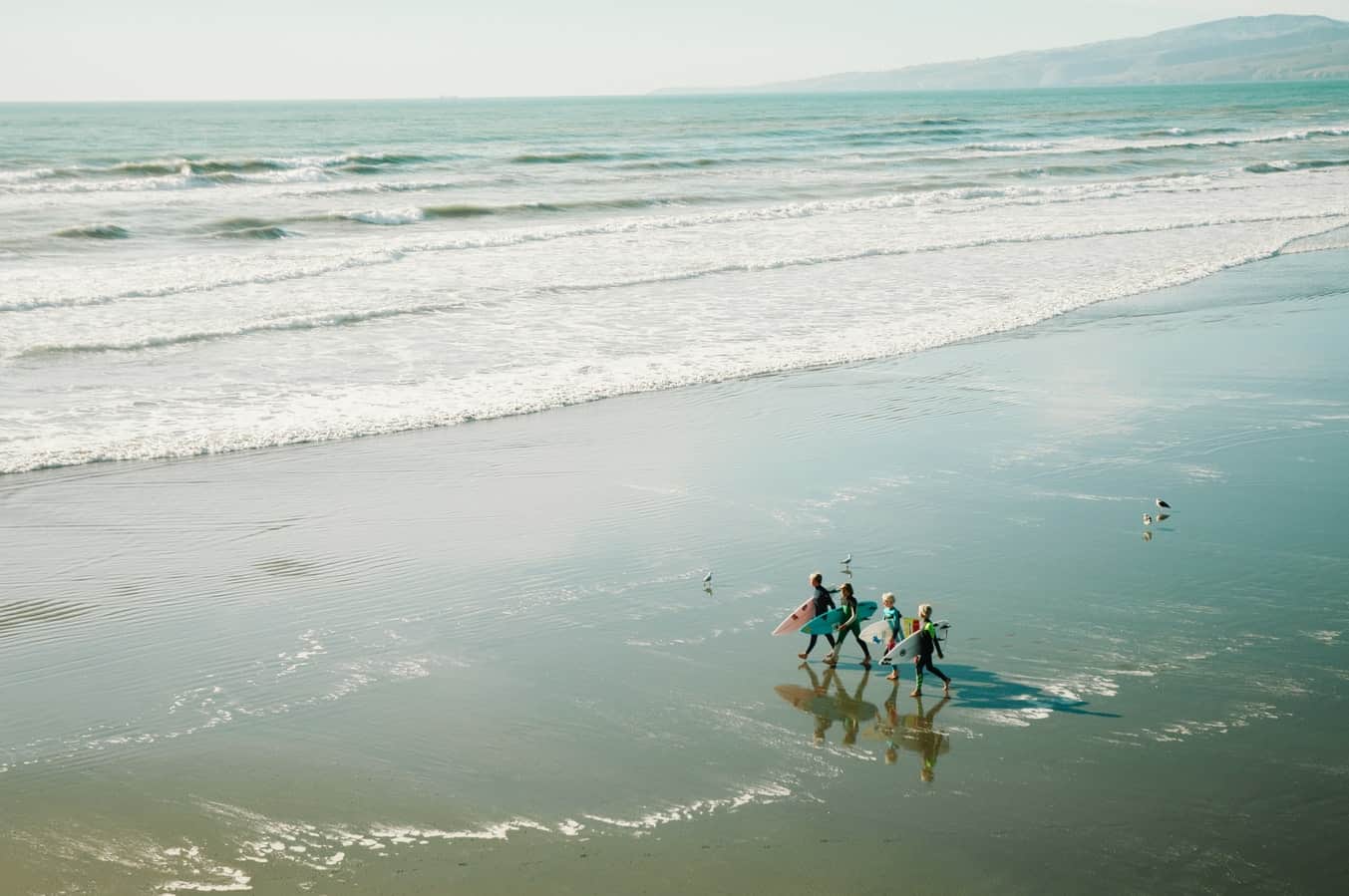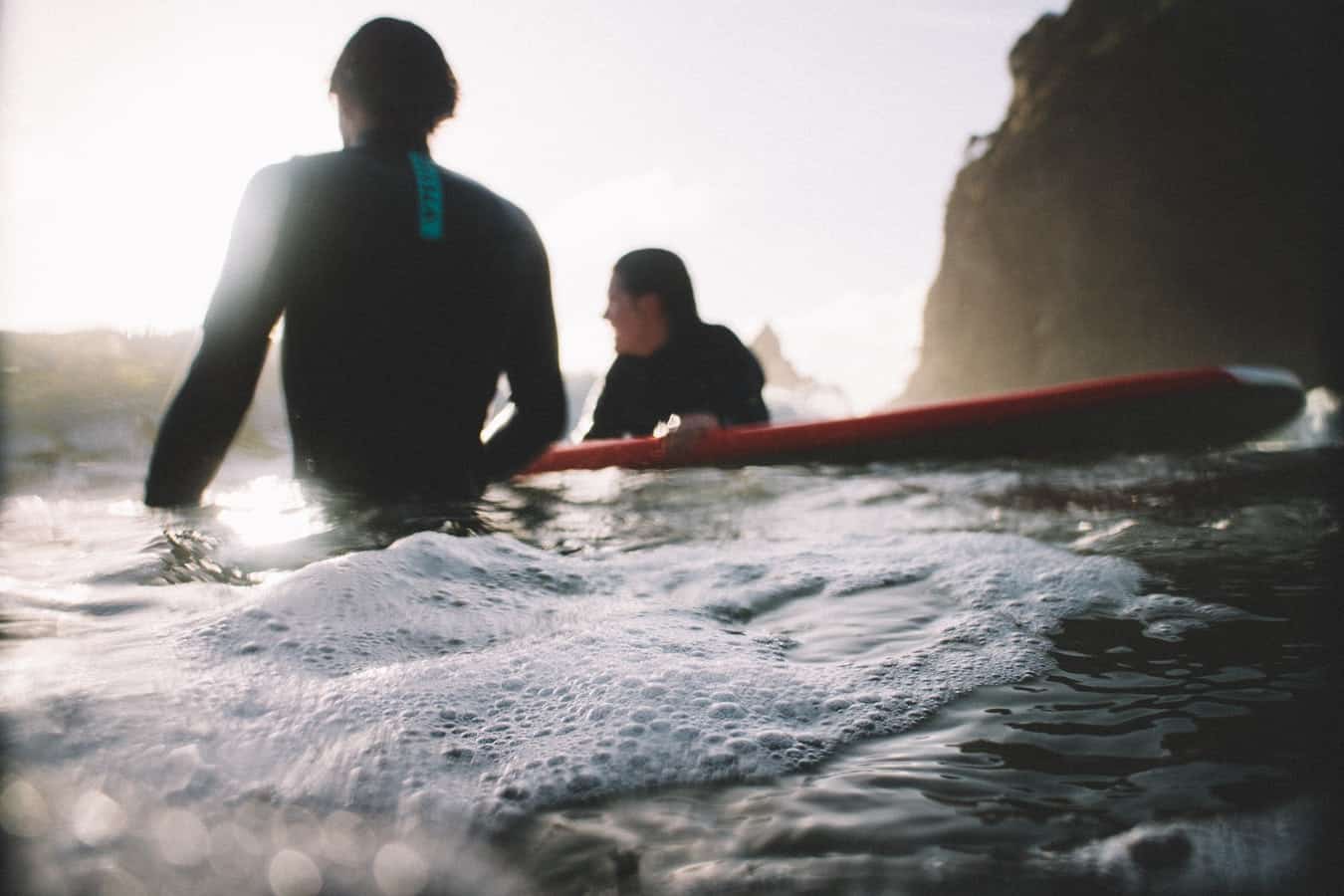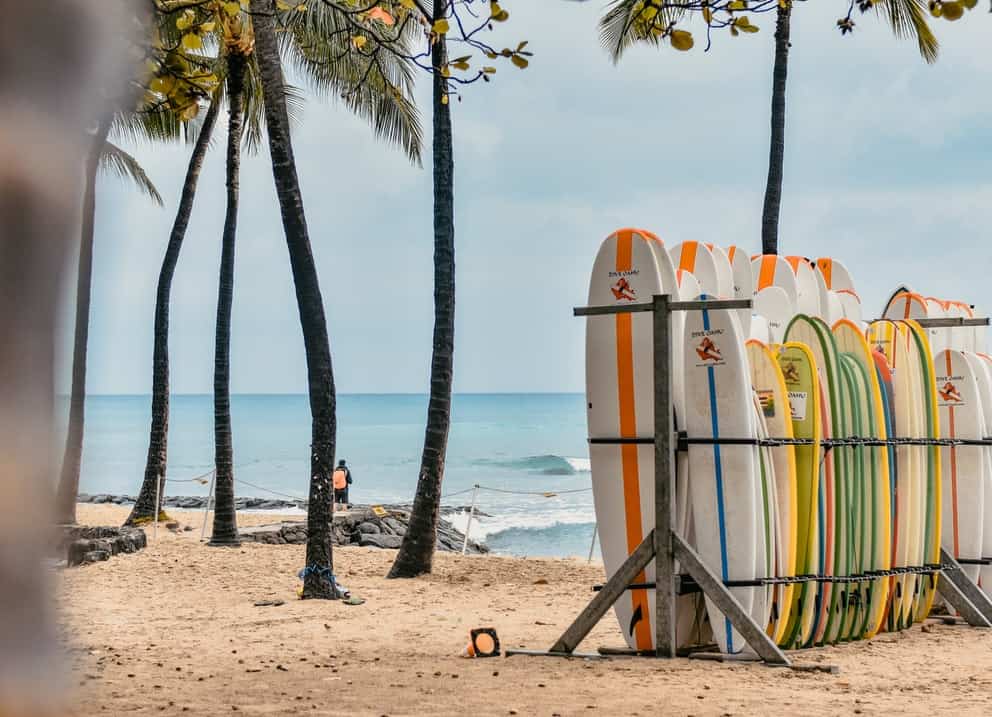When you watch surfers out on the water, catching waves looks almost effortless. In reality, there’s a lot that goes into surfing, the board you ride being one of the biggest factors.
Different boards provide different riding experiences and are meant for different levels of surfing ability. This can make it overwhelming when you’re picking out your first surfboard.
What goes into choosing a board and what is the best kind to learn on? The easiest board to learn to surf with is a soft top longboard. If you’re a beginner, go for a soft top longboard. Longboards are usually nine to twelve feet in length and on the wider side (twenty two to twenty four inches) than other shaped boards.
They offer better stability than shorter boards making them a great choice for beginners. Longboards also work best in smaller waves around one to four feet high.
Perfect for when you’re focused on perfecting your paddling and stance.
Shortboards may look cool or be the image you have of surfers, but these boards are a challenge to stay up on and are more designed for high performance and tricks.
Longboards are on the heavier side compared to shorter boards, but their stability is a good trade off.
Surfboards are usually made of epoxy and resin, fiberglass or foam. Foam, or soft top boards are the best choice for a beginner.
Their materials are more forgiving and will be able to handle being beat up by the waves. The combination of these make a soft top longboard the best choice for beginner surfers.

Why Longboards Make Good Beginner Boards
Surfboards range in size anywhere from around five feet to twelve feet. The length and width of a board relates to its balance and stability.
The longer and wider a board, the easier it is to balance. Longboards, as you would think, are the longest option down to shortboards.
Along with various lengths and widths, surfboards also have varying thicknesses.
The thickness of a board, or its volume, relates to its ability to float. The thicker a board, the better it floats.
Longboards are generally thicker than shortboards meaning they will have greater buoyancy.
Thanks to the extra surface area and buoyancy, longboards have an easier time getting picked up by waves, meaning you can spend more time actually riding the waves.
The right dimensions of a board will be different for different people and is based on your height and weight. A longboard for someone five feet tall won’t necessarily be a longboard for someone over six feet.
Surfboards are also made of different materials. Usually when you think of surfboards, we picture the ones made of epoxy or fiberglass with a foam interior. These are the most common board materials today.
However, while great, epoxy and fiberglass are more fragile materials making them more susceptible to damage from hazards like reefs, rocks or even other people in the water, to dings during transportation.
These boards are also hard and can cause injuries if you’re hit by them out in the waves.
Soft tops, or foamies are boards made with a foam core, but also have a foam top with a harder, slick bottom. These materials make foam boards more durable, and much softer than their counterparts.
In the beginning of learning how to surf you want to be able to focus more on technique than board maintenance making a soft top the better choice.
Besides, foam will hurt a lot less than epoxy when you’re eventually smacked by your board in a wipeout.
Although longboards are easier to balance on and catch waves with, they are heavier and more clunky than their shortboard counterparts. They aren’t meant for sharp turns or quick maneuvers.
As you get better at surfing you may want to add other shaped boards to your repertoire but a longboard will serve you well on average days no matter what your skill level is.

Parts of a Surfboard
There are four main parts to a surfboard, the length, width, thickness and rocker. These four parts make up all boards and vary depending on the style.
In order to understand the best board for you and why, it’s important to understand these aspects.
Length
This is the measurement from the tip of the nose to the tip of the tail. Boards can be as short as five feet for a groveler all the way to a twelve foot longboard or more.
Different lengths are meant for different types of waves as well as different levels of surfing ability and the height of the surfer.
A longer board will catch waves easier and be easier to paddle while a shorter board allows for more agility in turns.
Width
Width is measured from the widest point of the board, rail to rail. The width of boards can range around eighteen inches up to twenty three inches.
Width relates to paddling and stability. The wider a board, the more surface area and floatation, making it easier to paddle and to stay up.
More narrow boards help with turns and tricks but require more precision in your foot placement. Wider boards allow for more margin of error when perfecting your stance on the board.
The widest point can be the center of the board or slightly above or below. The area of the widest point makes a difference in its ability to turn and ease of paddling.
Thickness
The thickness of a board relates entirely to its floatation. The thicker the board, the more it floats.
Thicker boards float well making them easier to paddle and easier to catch waves with, especially in smaller, softer surf.
Thinner boards are easier to make turns and carves in the waves while thicker boards don’t allow for quick movements.
Foil, a term you may find regarding surfboard dimensions, is the distribution of thickness along a board. Your board can be thinner in the tail or the nose than it is in the middle.
In general, thicker is easier for beginners while thinner allows more maneuverability, perfect for more advanced surfers.
Rocker
Rocker refers to the curve of a board when looking at it from the side. The greater the rocker, the more curve it has.
You can refer to the nose rocker and the tail rocker as the curves of the front of the board and the back of the board.
The greater the curve, the better maneuverability and the less the stability. The less rocker a board has, the flatter it will be.
Flatter boards allow for more surface area to touch the water. This provides better stability and drive. In general flatter boards perform better in smaller surf but are harder to turn with.

The Types of Boards
There’s more to surfboard shapes than just longboards and shortboards. Within those labels are various boards of length and width for all different types of surf and skill.
Longboards
Longboards are the longest of the surfboards and allow for the greatest stability and buoyancy. They’re perfect for smaller surf.
This style is recommended for beginners but is great for any skill level wanting to ride smaller waves.
Gun
Guns are specialized surfboards meant for big wave surfing. Their length can be similar to longboards, but they are thinner and pointier.
These are often custom boards and meant for the most advanced surfers taking on serious waves.
Funboard
Funboards are a step down from longboards and range roughly seven to eight feet. This style has a wider nose and more relaxed rocker making it another choice for more beginner surfers.
You can use this style in small and larger surf depending on its rocker and fin setups.
Fish
Fish boards are similar to shortboards but they are wider and have a notch in the tail. Meant for smaller waves, the extra width creates greater surface area allowing for better paddling and catching of waves.
A fish makes a good transition from a longboard into a short board. They’re also great for more advanced surfers that want to be able to enjoy riding in small surf.
Shortboard
Shortboards range around five to seven feet. They have a greater nose rocker to keep you from nose diving on waves and can have anywhere from two to four fins.
These boards are good for intermediate to advanced surfers as they require more agility and strength to catch waves and stay standing. Shortboards are also great in terms of maneuverability making them a good choice for practicing tricks and turns on the waves. Short boards are not the best choice for beginners.
Related Questions
How Long Should a Beginner Board Be?
The right length of board for a beginner will depend on your height, but generally around nine feet is a good length for a new surfer.
A board this length with a good width will make it easier to catch waves and easier to stay standing up on your board during the learning stage.
What are Surfboards Made of?
Most surfboards are made from polystyrene or polyurethane foam that’s covered with fiberglass or epoxy resin. This makes these boards lighter with hard outsides.
Foam boards are made of a polystyrene or polyurethane foam core as well with and EPE or EVA foam layer on top.

